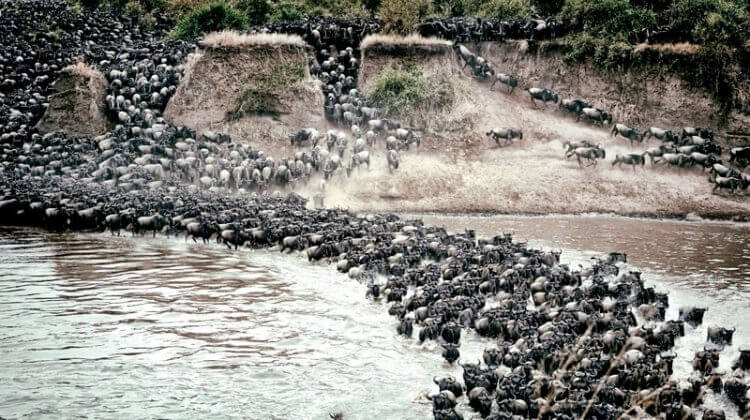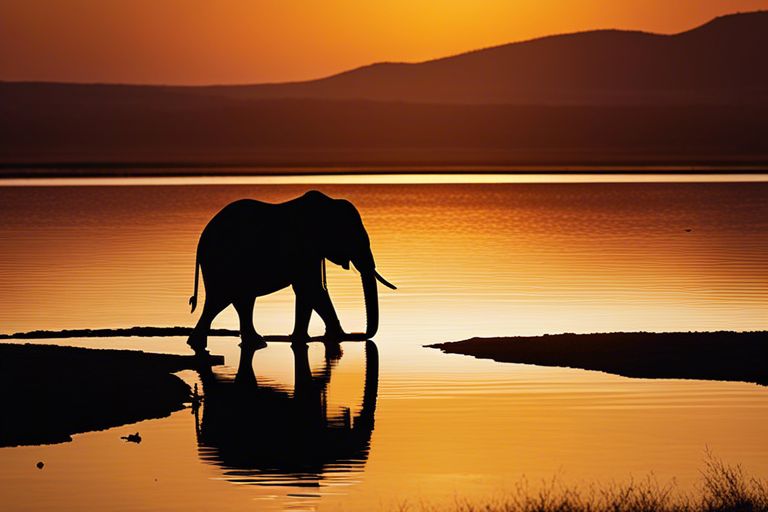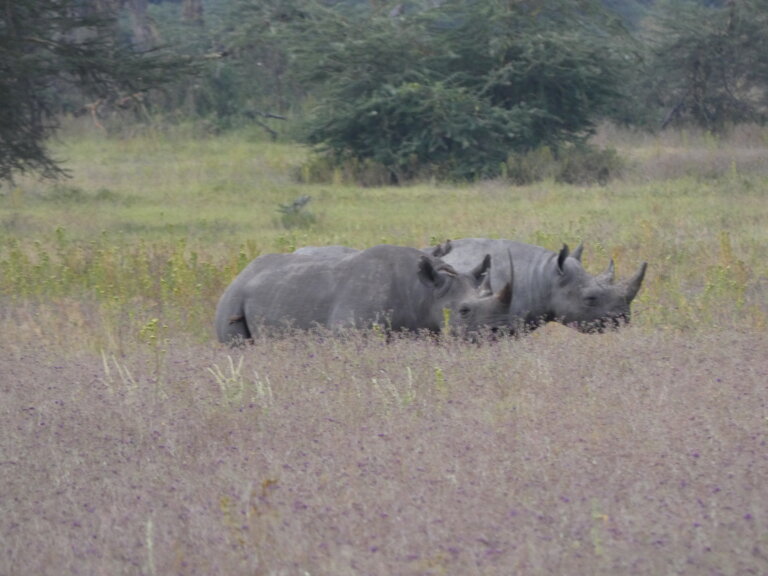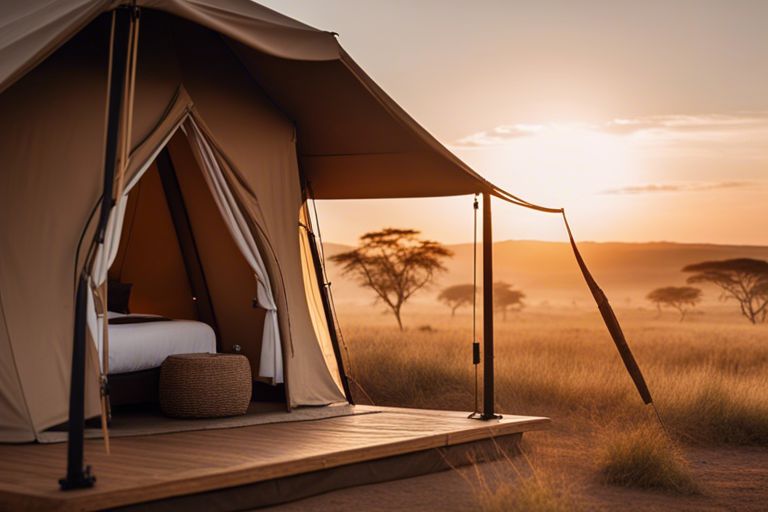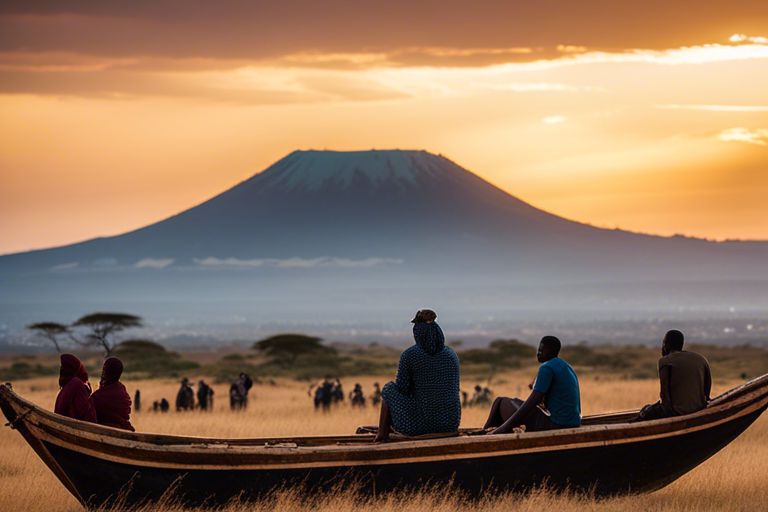When is the Best Time For Wildebeest Migration in Serengeti?
The best time to visit the Serengeti National Park is in the Dry season (from late June to October). This period offers the best wildlife viewing in general – with the wildebeest migration as its absolute highlight. Wildlife viewing is good throughout the year, but certain areas are better at specific times. The timing of the migration varies every year (the best chance of seeing it is during June and July) while the wildebeest calving is from late January to February.

Best Times to Visit the Serengeti
Weather and Seasons in the Serengeti
The weather in the Serengeti is relatively pleasant, reaching temperatures of 25°C (about 77°F) during the day and dropping to 14°C (about 57°F) at night. Make sure that you pack appropriate clothes for a safari so that you are comfortable during your stay.
See more on essential things to pack for a safari in Tanzania.
Safety Tip: To minimise the risk of malaria during the wet season, anti-malaria precautions must be taken. It is highly advised to pack repellent and take the necessary anti-malaria medication.
See our article on vaccinations and medications for more information.
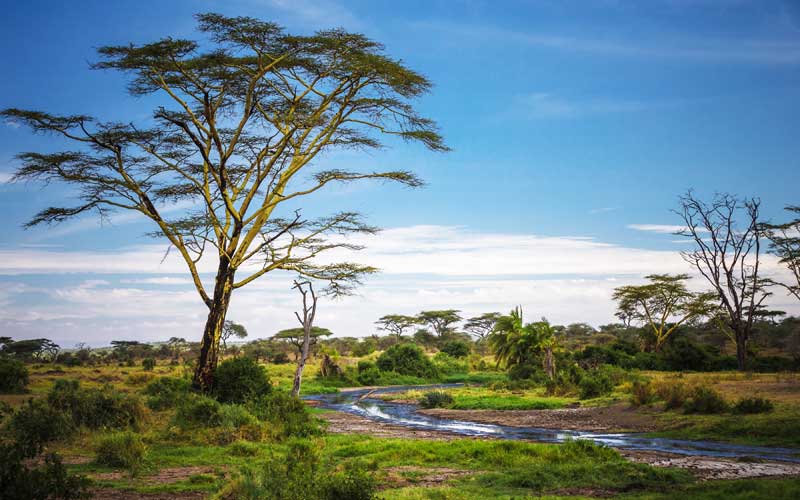
The seasons in the Serengeti National Park are normally classified as follows:
- Dry season
- Wet season
Dry season
The dry season (also known as ‘peak season’ in travel terms) is from late June to October and is considered the best time to visit the Serengeti overall. This is because the Serengeti’s rainy periods often make road conditions very poor and restrict access to the plains filled with the wildebeest herds and other wildlife.
Wet season
The wet season in the Serengeti is from November to May and is typically characterised by consistent rain and humidity. This season is further classified into two distinct periods of rainfall:
- Short rains – November to December
- Long rains – March to May
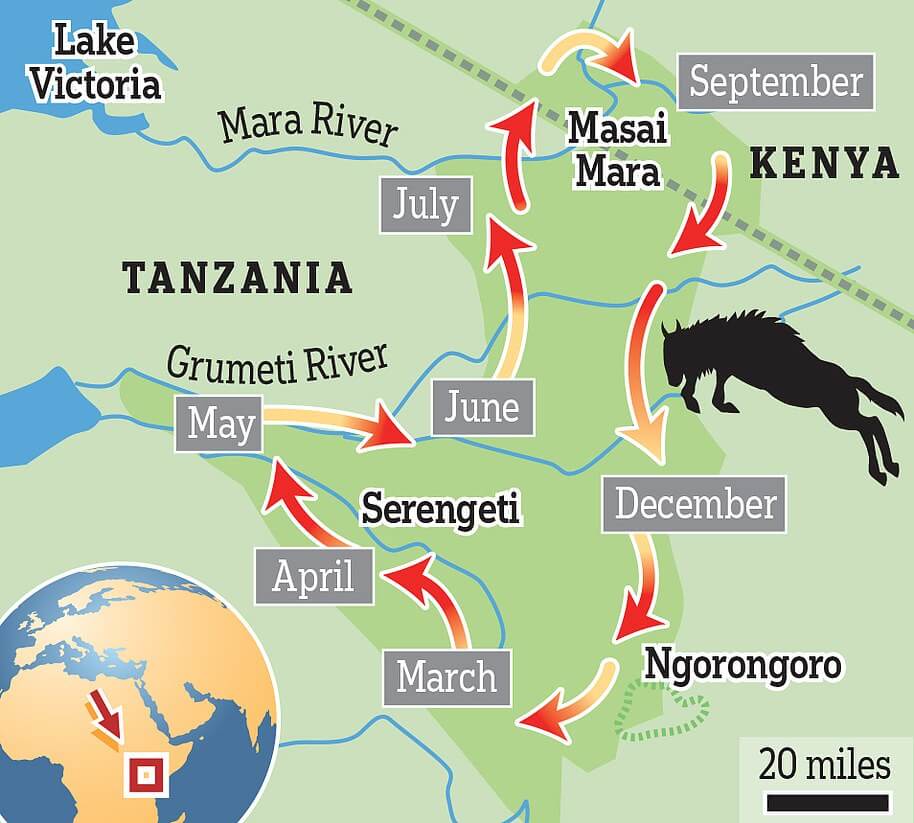
Of course, you can’t forget about the third and most important season of all in Tanzania – the peak tourist season, which happens in two key periods:
- January to February – the calving/birthing season for Serengeti wildlife
- June to October – the ‘classic safari’ period where tourists can enjoy typical safari accommodation and activities like camping and game drives.
Knowing the Serengeti weather and seasons in advance will help you to better prepare for your safari tour.
Here is a quick outline of the characteristics and benefits of various safari seasons in the Serengeti:
|
Time of year |
Weather Conditions |
Description |
|---|---|---|
|
January – February June – October |
Jan-Feb generally marks the dry spell between the short and long rains. There is little to no rainfall from June-October, which also makes it part of Serengeti’s dry season. Temperatures reach up to 25°C (77°F) with cold early mornings and evenings. Risk of occasional cold fronts in July when temperatures can reach close to freezing. |
Many visitors prefer this over the hot, humid rainy months. Ideal times to go on a classic safari. Spotting wildlife is more predictable during these months as the vegetation thins out and animals gather around waterholes and rivers. Another benefit to consider is that during this time of the year there are fewer mosquitos and a smaller chance of catching malaria. |
|
March-May |
Known as the period of of ‘long rains’ during the wet season. The weather is extremely hot and humid during this season. |
While it may still be a good time to visit Serengeti, your trip will be impacted by the heavy rainfall. Tourists who find these weather conditions unpleasant should ideally avoid travelling during these months. |
|
November-December |
Known as the period of ‘short rains’ during the wet season. Less predictable rainfall than in the ‘long rains’ period and lots of afternoon thunderstorms. |
The wildebeest herds are drawn back to the Southern grasslands. Safaris are unlikely to be impacted by the weather. Considered an excellent time to visit the Serengeti. |
Best Time to Enjoy an Affordable Safari
A traveller looking to enjoy an affordable Serengeti safari can take advantage of the wet season period from November to May. This time of year (also known as the off-peak ‘green season’ for its lush vegetation) typically herds in (pun intended) the best deals and discounts.
If you can brave the rain, you’ll benefit from these off-peak seasonal rewards:
- A cheaper safari
- Fewer crowds
A Cheaper Safari
While the dry season is considered the best time to visit the Serengeti, visitors who brave the wet season (November-May) have the advantage of reduced accommodation prices and a better safari.
Serengeti safaris offer spectacular wildlife viewing throughout the year, and fewer tourists usher in discounted safari rates and the opportunity to stay at lodges that would have otherwise been unaffordable.
Fewer Crowds
For experienced safari-goers, a major draw-card of the off-peak Serengeti season is fewer crowds. This means that you don’t have to navigate through the peak-season crowds, especially in April and May.
It might come as a surprise to discover that some tourists plan a trip to the Serengeti to avoid the Great Migration altogether. The Serengeti National Park has so much more to offer beyond the great wildebeest trek.
Read on for more detailed info on the best times to visit the Serengeti for specific safari tours and activities.
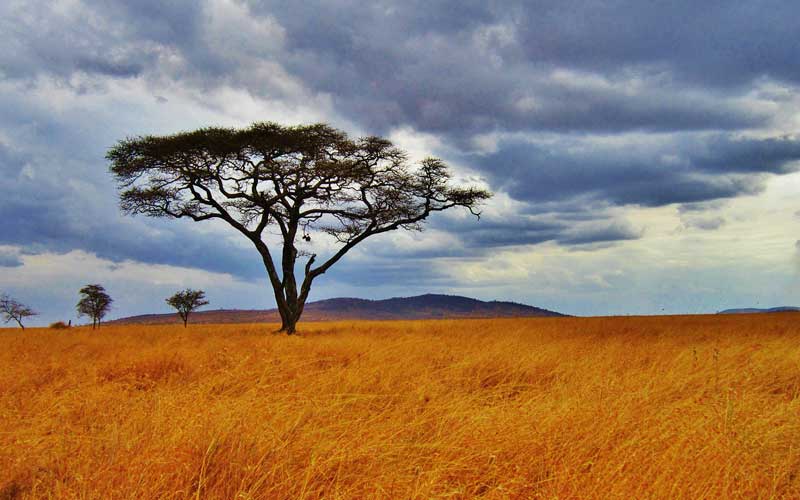
Acacia tree in the Serengeti Plains
Best Times for Serengeti Safaris during the Great Wildebeest Migration Seasons
The best time to go on a Serengeti safari is late January and February for the calving season and from June till September for the Great Wildebeest Migration as well as a great classic safari. But these are also the most popular and touristy months. The less crowded and cheaper period is from November till May, known as the Green Season.
In general, the wildebeest migration tends to be in the Southern Serengeti for the calving season from February to mid-March. At the same time, during the period between December and March, the herds head out in the direction of the Ngorongoro Crater.
For someone who finds the wildebeest calving period fascinating and jumps at the chance of unprecedented predator action sightings, then late January-February would be the ideal time for a Serengeti safari.
For more information and Serengeti Safari Planning Contact us Now

